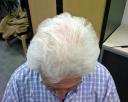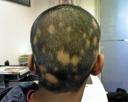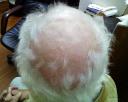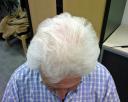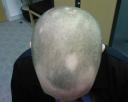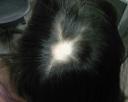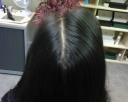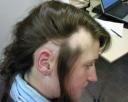You are diagnosed as suffering with androgenetic alopecia or female pattern baldness: What can you do?
06.02.2008 in FEMALE HAIR LOSSAndrogenetic alopecia in women is often linked to hormonal changes with the hair loss following events such as the menopause, childbirth or as a result of stopping or starting oral contraceptive pills. The hair loss is generally more uniform over the scalp than in the male counterpart, but also results from a complex chemical reaction when the enzyme 5-alpha-reductase converts the testosterone in the system into DHT or dihydrotestosterone. The hair follicles are genetically predisposed to be over sensitive to the DHT and become smaller and smaller with time, leading to the eventual hair loss.
To treat this hair loss condition, we would recommended an intensive 12-month treatment course of:
Vitastim 15% Hair Regrowth Stimulant and Hair Loss Stabiliser
This stimulant is recommended to help stabilise hair loss and strengthen existing hair. It is a natural hop-based solution that works as a vasodilator to increase blood circulation in the scalp and so enable healthy hair growth. It also contains a multi-vitamin complex to help catalyse the process of conversion of amino acids into keratin hair cells and accelerate growth and diameter of the hair from the dermal papilla.
Directions for use: One millilitre to be massaged into the scalp gently twice a day, morning and evening, and left on for at least 8 hours.
Please note: As vasodilators are designed to dilate the capillary blood vessels the scalp may redden on the area where the stimulant is applied and may also tingle slightly for a while.
In conjunction with:
Biostim 15% Hair Regrowth Stimulant and Hair Loss Stabiliser
This stimulant contains a very effective, natural 5-alpha reductase inhibitor. It reduces the amount of 5-alpha reductase in the scalp and thereby reduces the formation of DHT, stabilising hair loss and encouraging a healthy growth cycle.
Directions for use: One millilitre to be massaged into the scalp gently twice a day, morning and evening, and left on for at least 8 hours.
We would also recommend that you visit the Hair Centre regularly for check-ups so that your progress may be monitored effectively.
Do you have Hair Loss Problems, read our Hair Loss Help
2 comment








